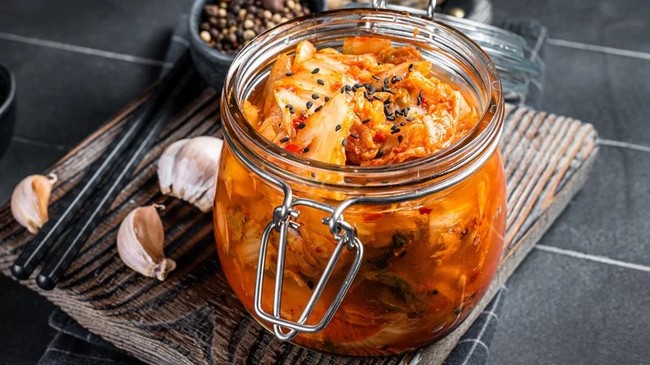✕



✕

Tag:kimchi store 2024-12-25 14:42

Mironov Vladimir/Shutterstock
Kimchi is a traditional Korean dish made by fermenting vegetables — most commonly napa cabbage and radishes — with ingredients like garlic, ginger, chili peppers, and fish sauce and submerging the mix in brine. This process not only preserves the vegetables but also imparts a distinctive tangy flavor and rich nutritional profile. Kimchi's history stretches back over 2,000 years to ancient Korea. Originally created as a means to preserve vegetables during harsh winters, it has become a symbol of Korean culture, evolving into a staple celebrated worldwide for such health benefits as supporting gut health, improving digestion, and strengthening the immune system.
Once opened, kimchi's shelf life varies based on storage conditions. At room temperature, it lasts about one week, as the fermentation process speeds up without refrigeration. However, when stored in the refrigerator, kimchi can remain fresh for three to six months. During this time, its taste and texture evolve. As it continues to ferment, it becomes more sour and softer. Some may prefer the milder taste of a fresher batch and should consume their kimchi within three months. However, others may enjoy the intensified flavor that develops within six months. Always check for signs of spoilage such as an unpleasant odor or mold before consumption.
Tips for preserving your kimchi

Metamore Studio/Shutterstock
Make sure to store kimchi in the refrigerator at an ideal temperature of 32 to 39 degrees Fahrenheit. Use airtight, sterile glass or ceramic containers to prevent odors from escaping and to avoid contamination. Stainless steel containers also work well for long-term storage. Freezing kimchi is not recommended because it alters the texture, making it mushy and reducing the signature crunch. If absolutely necessary, freezing should be done in small portions using freezer-safe containers.
While kimchi shines as a tangy side dish, its versatility makes it a culinary treasure. Fresh kimchi is perfect for topping burgers, tacos, or grilled cheese sandwiches, adding a light yet flavorful crunch. Toss aged kimchi into cooked dishes like fried rice or kimchi jjigae, a hearty Korean stew in which deep, fermented flavors can provide a comforting, spicy kick. If you're feeling creative, you can try making your own homemade kimchi recipe, but make sure to follow instructions meticulously. The biggest mistake people make when preparing kimchi is getting the fermentation wrong by adding too much fish sauce. This can cause kimchi to over-ferment, shortening its shelf life.
Whether fresh or aged, there are many ways to use kimchi you may not have thought of yet such as adding it to mashed potatoes or spaghetti. With proper storage, you can savor kimchi's unique taste at every stage of its journey.
Climate change threatens US apple farm revenue and marketability in key growing areas, warns study
Sugar output in India drops 16% due to adverse weather conditions, says trade organization
Pennington Biomedical highlights DASH diet’s enduring benefits for heart health
Ajinomoto Foods Europe and Standing Ovation partner to deliver alternative proteins for dairy
About Us Terms of Service Privacy Policy Contact Us
Hotline(+86)17301604571
 Enterprise WeChat
Enterprise WeChat
for Client Service
 EZBuy
EZBuy
WeChat APP
Sinoexpo Digital Platform
Shanghai Sinoexpo Informa Markets International Exhibition Co., Ltd. All rights reserved
沪ICP备05034851号-77
 沪公网安备31010402000543号
沪公网安备31010402000543号